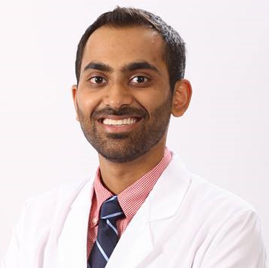What are biologic stem cells?
Stem cells are naturally occurring, undifferentiated cells throughout the human body. These cells hold the ability to develop into any type of specialized cell with a particular function. To be classified as a stem cell, a cell must exhibit two properties: potency and self-renewal. A stem cell must be capable of remaining undifferentiated after cellular division and cellular growth, known as self-renewal. A stem cell must also possess the potential to transform into another specialized cell, known as potency. The study of these cellular properties has become exceptionally beneficial for researchers and physicians in understanding disease etiology, advancing regenerative medicine, and testing the safety and efficacy of new drugs.
Stem cells that have potential to turn into any tissue are generally not available in the US. The type of stem cell therapies used in injections are actually mesenchymal stem cells (MSCs) and we prefer to refer to these as biologic therapies or injections. MSCs are relevant in orthopedics because they have the potential to turn into bone, cartilage, ligaments, tendons, fat, etc. Common biologic injections are platelet-rich plasma (PRP) and bone marrow aspirate concentrate (BMAC) injections.
Dr. Ronak Mukesh Patel, orthopedic joint preservation doctor, treats patients in Sugar Land, Pearland, and the Houston, Texas area, who have a bone or joint condition that can be treated with certain biologic (stem cell) therapies.

Where are stem cells found?
A number of stem cell sources have been uncovered by researchers and sorted into three types: embryonic, adult, and induced pluripotent.
Embryonic: Embryos within the three to five-day-old range contain these versatile stem cells with the potential to transform into any specialized cell in the body. These stem cells function in tissue and organ repair.
Adult: These stem cells are located within the bone marrow and have a more limited capacity for differentiating into various specialized cell types.
Induced Pluripotent (iPS): These are adult stem cells that have been reprogrammed to be genetically similar to embryonic stem cells. This modification increases the potency of adult stem cells which can prevent rejection by the body’s immune system.
How are biologic (stem cells) therapies harvested for therapeutic use?
Through a procedure known as bone marrow aspiration, adult mesenchymal stem cells are most often harvested from the bone marrow in the pelvis near the hip. This procedure is conducted by injecting a local anesthetic into the collection site and placing the needle in the correct position. Once the desired amount of bone marrow aspirate has been collected, the sample is rapidly spun in a centrifuge to separate the various components of blood. A bone marrow aspirate concentrate (BMAC) is created by combining the adult stem cells, platelets, and white blood cells together. This substance is then delivered to the injury site to stimulate an anti-inflammatory environment and decrease pain.
Stem cells can also be collected from donor placental tissue after birth. These perinatal stem cells can be isolated and implemented to treat specific conditions such as arthritis and tendon inflammation.
Finally, platelet-rich plasma can be harvested via a simple blood draw. More information about PRP can be found here: Platelet Rich Plasma
What conditions can be treated with biologic (stem cells) therapies?
A variety of bone and joint conditions, as well as some cardiovascular conditions, have responded well to biologic (stem cell) therapies showing promise for this alternative treatment measure. Stem cells have also been used to assist the immune system in fighting certain types of blood-related disorders and cancers, such as lymphoma, neuroblastoma, leukemia, and multiple myeloma. It should be noted, however, that stem cell therapy may not be beneficial to everyone. The number of stem cells collected and the body’s ability to regenerate tissue from stem cells often declines as the body ages; therefore, older individuals are typically not considered good candidates for this biologic treatment.
Dr. Patel may discuss the option of biologic (stem cell) therapy with patients experiencing any of the following conditions:
- Acute and chronic tendon injuries
- Articular cartilage damage
- Muscle strains and sprains
- Osteoarthritis
- Acute and chronic ligament injuries
- Joint injuries, particularly the shoulder, elbow, hip, knee
Research for the use of biologic therapies is promising and of high scientific importance. The equipment used to make biologic therapies is approved by the Food and Drug Administration (FDA), but the procedure and injections used for orthopedic conditions is not officially approved. PRP and BMAC are derived from the patient’s own blood so it is not considered a drug. It is able to be widely used by physicians who are informed and educated about the therapy, base its use on scientific studies and evidence, and monitor the patients recovery and safety.
Biologic (Stem Cell) Specialist

Biologic Stem Cells, also called regenerative medicine therapy can be used to treat many different orthopedic conditions. Biologic therapies include cells, growth factors, blood products and donor tissue. These therapies have been shown to decrease inflammation, support the body’s own healing process and can replace injured structures with new growth. Biologic therapy specialist, Doctor Ronak Mukesh Patel, provides several different types of biologic therapy including PRP, stem cell and BMAC treatment options for patients in Houston, Sugar Land, and Pearland, TX who could benefit from biologic therapy. Contact Dr. Patel’s team today!








